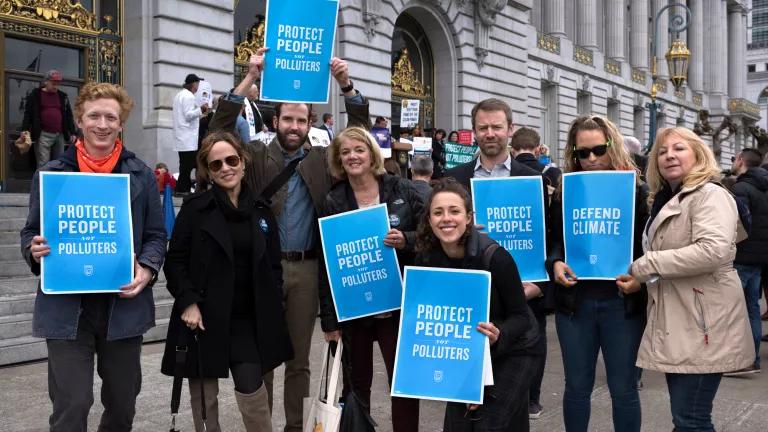Latin America Green News: Mexico (Finally) Gets Clean Diesels, Peru (Finally) Declares Emergency in Polluted Amazon, Argentina (Finally!) Gets Ambitious With Climate Goals
Latin America Green News is a selection of weekly news highlights about environmental and energy issues in Latin America.
May 25th – June 1st, 2016
Climate Change
UNESCO, the United Nations Environment Programme (UNEP) and the Union of Concerned Scientists (UCS) published a new report listing thirty-one natural and cultural monuments and sites around the world currently under threat from the effects of climate change. Among the listed countries are Colombia, Chile and Ecuador. In Cartagena, a historical city found along Colombia’s Caribbean coast, increased flooding and high-intensity waves associated with climate change have already begun to deteriorate its national monuments. The ancient Moai statues, located in the Polynesian island of Chile, Easter Islands, are at risk of being destroyed by the erosion of its coast. And the Galapagos Islands of Ecuador, recognized for its unique wildlife, are vulnerable to temperature increases, sea-level rise and droughts associated with climate change. Mechtildd Rössler, Director of the Division for Heritage at the UNESCO World Heritage Centre, stressed the critical importance of keeping global temperature increases below 2 degrees Celsius in order to protect our natural heritage sites. (El Tiempo 5/25/2016, El Universo 5/26/2016, La Tercera 5/26/2016)
During climate talks in Bonn, Germany this week, Undersecretary of Climate Change for Argentina, Carlos Gentile, signaled Argentina’s intention to revise its Intended Nationally Determined Contribution (INDC) submitted in the lead-up to the COP21 in Paris to include more ambitious greenhouse gas (GHG) emissions reduction targets. The original INDC committed to reduce GHG emissions by 15 percent by 2030, rising to a possible 30 percent contingent on international support. Argentina’s national cabinet on climate change is currently revising the country’s INDCs to set a new target that is both realistic and more ambitious. According to Gentile, the country aims to reduce its GHG emissions by promoting sustainable forest management, expanding on energy efficiency and renewable energy, and by transforming its transportation sector. (Telam 5/25/2016)
As part of the Proadapt conference that took place this week in Cartagena, Colombia, the city launched a new project called “Plan 4C”—the C’s stand for Cartagena, Competitive and Compatible with Climate—which aims to find solutions for the city to adapt to climate change. The project is funded by the World Development Bank (WDB), the Multilateral Investment Fund (FOMIN), and the Nordic Development Fund (NDF). Signaling the commitment of local governments to mitigating climate change, Cartagena’s Mayor Manuel Vicente Duque took part in the conference and the launching of the project. Among the themes covered in the conference were climate adaptation in the sectors of tourism, infrastructure, transportation, as well as new business and investment models that take into account climate risk. (Caracol 5/27/2016)
Energy
Mexico’s Energy Regulation Commission (CRE) has told the national petroleum company, Petróleos Mexicanos or PEMEX, that it must produce ultra-low sulfur diesel fuels by July 2018. After that date, the dirtier diesel fuels will not be permitted to be sold in the country, even despite PEMEX’s current financial woes. While PEMEX is already producing ultra-low sulfur gasoline products, the CRE says it will now have to comply with new fuel quality rules that require ultra-low levels of sulfur in diesels as well, which will affect around 40 percent of the diesel that PEMEX currently produces. The company had a monopoly on Mexico’s hydrocarbon market until 2014, when the national energy reform opened the sector up to foreign investors and private companies. (Reuters via El Financiero 5/31/2016)
Judges from Chile’s Third Environmental Court will visit the Puelo River and its surrounding area to determine the impacts that the proposed Mediterráneo hydroelectric project could have on the local economy, indigenous groups and overall environment if allowed to proceed. Leading up to this announcement, community members and organizations working to protect the Puelo River submitted numerous complaints and appeals to the tribunal, arguing against the legality of the project.
One of the leading complaints from the community is the expected degradation of the landscape, which would impact its tourism industry, the main source of employment in the region. The date of the judges’ visit has not yet been set. (Puelo Patagonia 5/30/2016)
A 160 MW solar power park began operations in Chile’s northern city of Antofagasta. The solar farm, known as Finis Terrae, is a $270 million investment that will provide electricity to 200,000 homes. The plant’s owner, the Italian company Enel, now operates 880 MW of energy in Chile in wind, solar, and hydroelectric power plants. (La Republica 5/30/2016)
Deforestation
Veracruz is the Mexican state with the country’s highest levels of deforestation. According to scholar Citlali López Binnqüist at the Center for Tropical Investigations at the University of Veracruz, the forest loss is largely caused by activities associated with cattle farming and agriculture. Since the 1970s and 80s, the Los Tuxtlas region in Veracruz has lost the greatest area of forest and has been unable to recover its lost land. (Clarín Veracruzano 5/26/2016)
Mining
Peruvian president Ollanta Humala has declared a 60-day emergency in the remote interior of the Amazon, where mercury poison, caused by the gold mining industry, is rampant. Studies have revealed that residents of the Madre de Dios region are showing dangerous levels of mercury in their system. “Forty-one percent of the population of Madre de Dios is exposed to mercury pollution," said Environment Minister Manuel Pulgar-Vidal. Tens of thousands of Illegal miners from Madre de Dios handle the mercury, often with their bare hands, to separate the gold ore from the rock. Moreover, nearly 40 tonnes of mercury are dumped into the Amazonian rivers per year, destroying over 247,105 acres of rainforest. Despite a 2012 initiative led by Humala to end the illegal gold mining industry in Madre de Dios, the gold mining in the region continues unabated. (EMTV 5/24/2016)
This week’s blog was completed with the help of contributions from Andrea Becerra.



